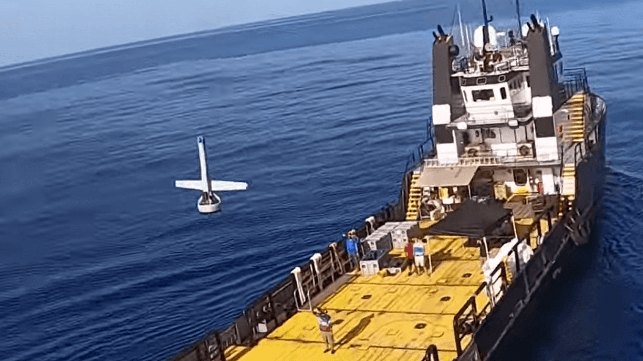Video: U.S. Navy's Drone Logistics Trials Take Flight

The U.S. Navy's Naval Air Warfare Center Aircraft Division (NAWCAD) wants to bring unmanned drone cargo delivery to the fleet, and it recently completed its first at-sea testing.
Commercial shipping companies have already tested at-sea deliveries with drones at the port of Singapore and in other markets, but the Naval Air Warfare Center believes its tests are a "first-of-a-kind" for the U.S. Navy.
For the test, the center trialed two different unmanned systems: the Skyways quadcopter/fixed-wing drone, and the Shield AI V-BAT, a VTOL drone that transitions to horizontal flight after launch. They were selected for range, payload, and capability to serve a wide variety of naval vessels and operating sites, without any dedicated hardware for launch and recovery.
The takeoff site for the groundbreaking test was Naval Air Station Patuxent River in St. Inigoes, Maryland, and the landing point was an OSV operating off the coast. Both the Skyways and Shield AI systems moved simulated cargo packages over 200 nautical miles in ship-to-shore, shore-to-ship and ship-to-ship tests, according to NAWCAD.
The final goal of the program is to reduce cost for cargo deliveries of less than 50 pounds. This size range accounts for about 90 percent of all naval logistics deliveries, including high-priority packages like spares for broken equipment. Switching to drones might reduce the need to fly manned resupply missions with a much larger aircraft.
“For the Marine Corps, the Commandant is enthusiastic about where we are going with unmanned logistics," said Col. Victor Argobright, the program manager for the project. "The Navy is currently identifying areas where unmanned logistics would be a critical enabler to operations at sea, and the Blue Water Maritime Logistics UAS is a great demonstration."
For the next phase, Argobright's program office wants to take these systems out to the fleet for shipboard testing "for an extended period of time."
